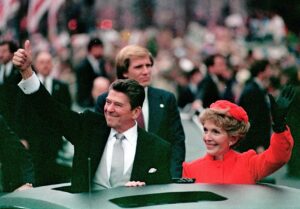
Despite the fact that the presidential inauguration has moved from March 4 to Jan. 20 in the course of our history, on a number of occasions it has been strongly influenced by the weather.
Though many blamed the weather for sparking the fever that led to President William Henry Harrison’s death just 31 days into his term, this was almost certainly not the case. In fact, the noontime temperature on March 4, 1841, was 48 degrees with overcast skies and a stiff wind from the northwest.
President Abraham Lincoln’s second inaugural was sparsely attended — though his assassin, John Wilkes Booth, was there — because the day was rainy and cold with a temperature in the high 30s. President William Howard Taft was inaugurated in a blinding snowstorm on March 4, 1909 — a storm that Weather Bureau forecasters had, just a day before, dismissed as a minimal threat.
Since the date was moved in 1937, the average temperature on Inauguration Day has been lower, not surprisingly, as late January is the coldest time of the year.
A couple of the Jan. 20 inaugurations have been characterized by notable weather. In 1961, President John F. Kennedy was inaugurated the day after a powerful snowstorm covered Washington, D.C., with 8 inches of fresh snow on a sunny day when the temperature barely reached 20 degrees. In fact, his was the second-coldest Inauguration Day in history, topped only by President Ronald Reagan’s second inauguration on Jan. 20, 1985, when the noontime temperature was 6 degrees after a record-setting morning low of minus 2. As a result of the bitter cold, the inauguration took place in the Capitol Rotunda, and the parade was canceled. In contrast, Reagan’s first inaugural was the warmest of all the January inaugurals, enjoying a high of 55 degrees.
Steve Ackerman and Jonathan Martin, professors in the UW-Madison Department of Atmospheric and Oceanic Sciences, are guests on WHA radio (970 AM) at 11:45 a.m. the last Monday of each month.

